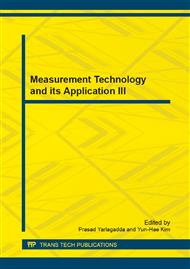p.19
p.26
p.30
p.36
p.40
p.45
p.50
p.55
p.59
Internet System of Cognitive Diagnosis Measurement for Mixed Scoring S-P Chart and its Applications
Abstract:
The purpose of this study is to develop an internet system for cognitive diagnosis assessment. The theoretical foundation of this cognitive diagnosis model is mixed scoring student-problem chart (S-P chart) which is beyond the limitation of traditional S-P chart. Therefore, one contribution of this study is to construct the cloud computing for analyzing measurement data. Another contribution is to extend the traditional S-P chart and accomplish an internet system. In addition to the theory and system, this paper also gives an empirical data to interpret utility of the internet system. The results show the feasibility of this internet system of cognitive diagnosis measurement. Based on the findings of this study, some suggestions and recommendations are discussed for future research.
Info:
Periodical:
Pages:
40-44
Citation:
Online since:
June 2014
Authors:
Price:
Сopyright:
© 2014 Trans Tech Publications Ltd. All Rights Reserved
Share:
Citation:


